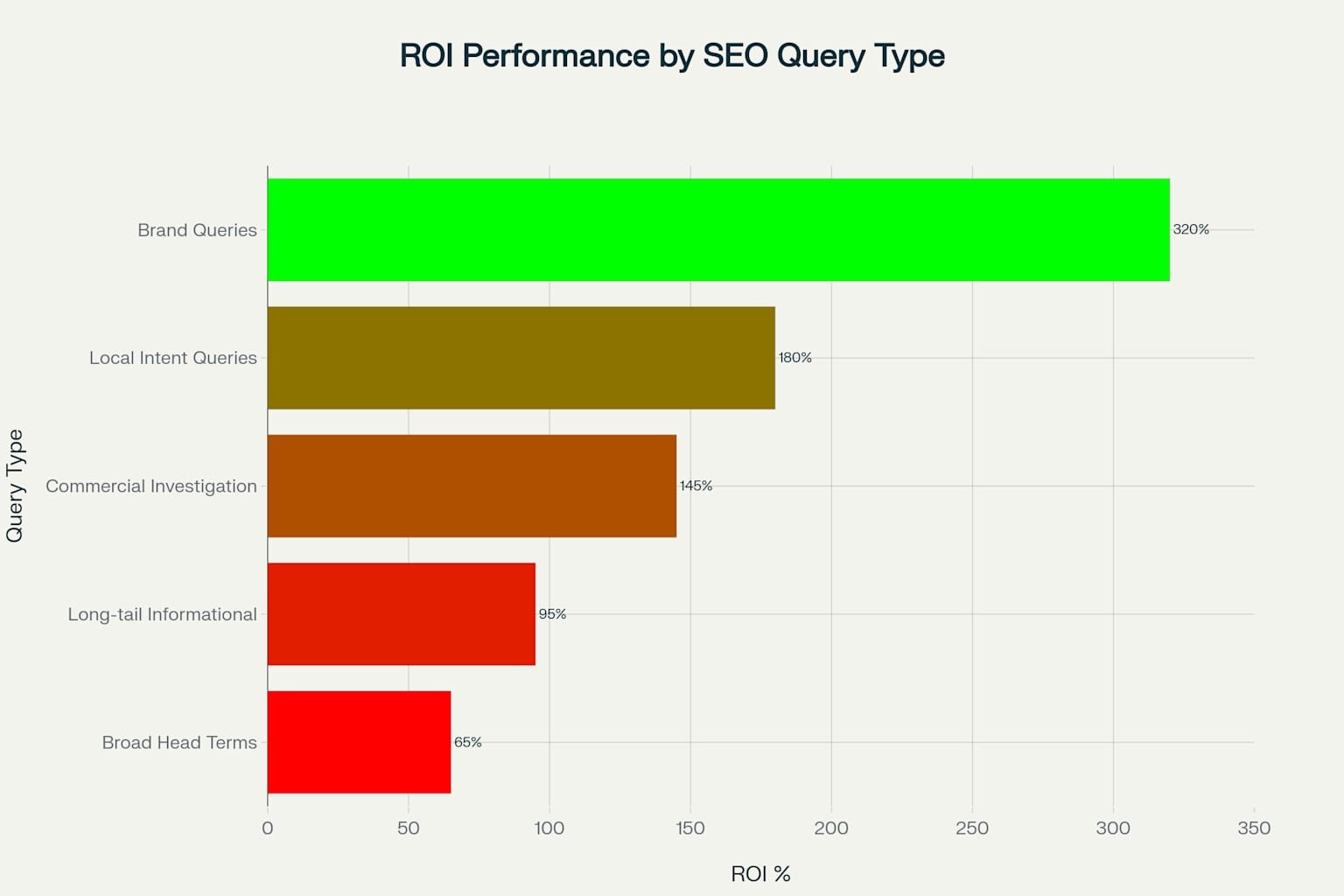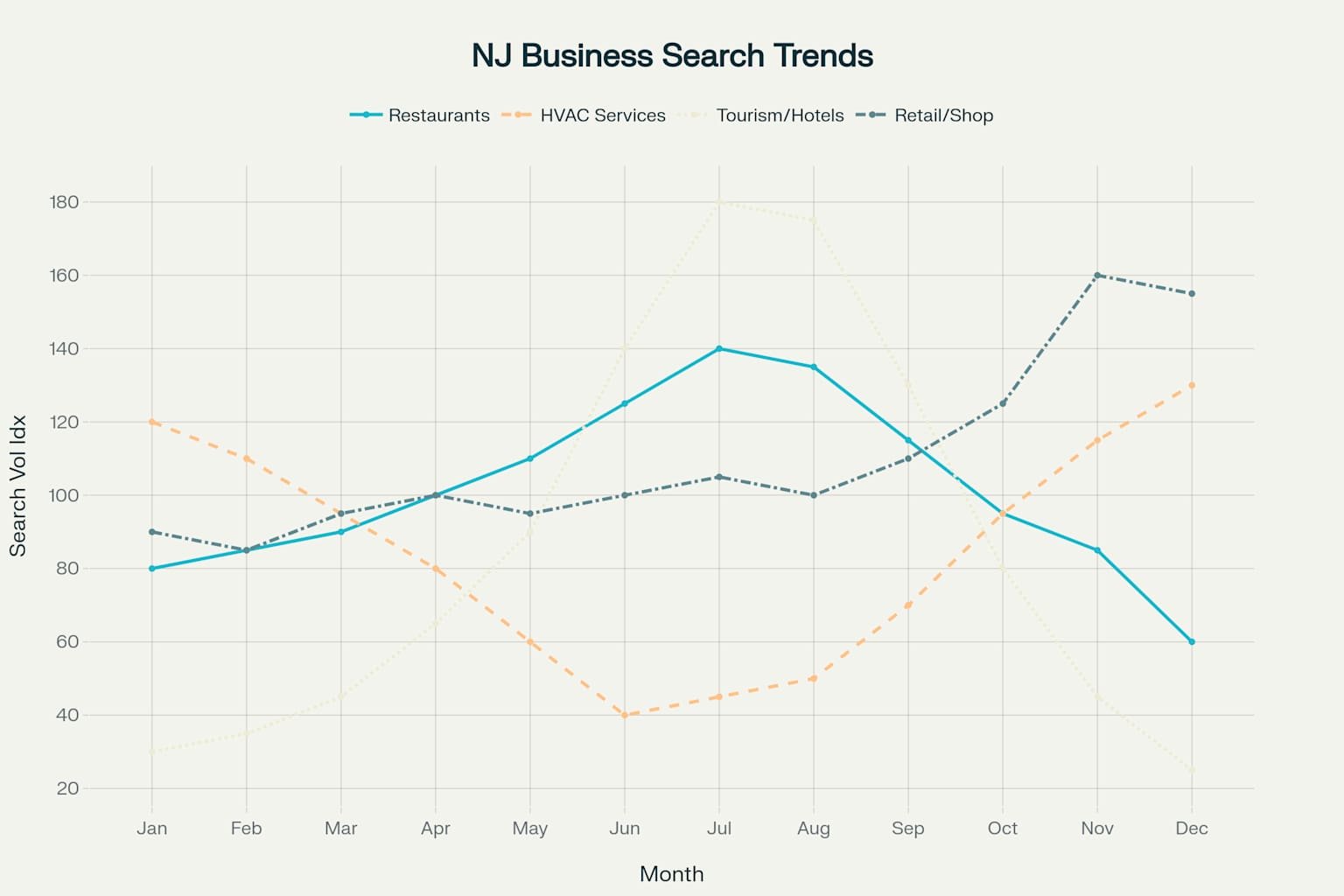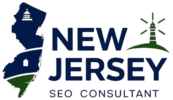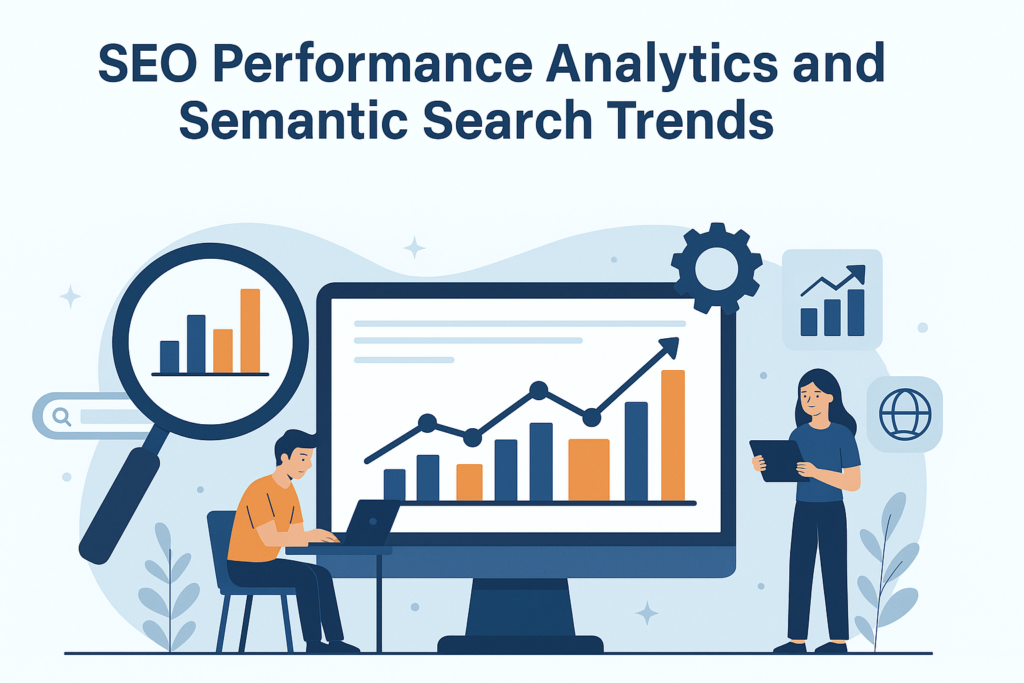In today’s rapidly evolving digital landscape, understanding search behavior through comprehensive data analysis has become the cornerstone of successful SEO strategies. Modern search engines have transformed from simple keyword-matching systems into sophisticated platforms that interpret user intent, context, and semantic meaning. For businesses operating in competitive markets like New Jersey, leveraging advanced analytics to decode search patterns isn’t just an advantage—it’s essential for survival.
SEO Performance Analytics enables businesses to track, measure, and refine their optimization efforts using real-time data insights. By leveraging these analytics, brands can align their content strategies with user behavior and intent for maximum visibility.
The shift toward semantic search has fundamentally changed how we approach SEO optimization. Gone are the days when stuffing content with exact-match keywords guaranteed rankings. Today’s algorithms prioritize content that genuinely addresses user needs and demonstrates comprehensive understanding of search intent. This evolution demands a more nuanced approach to SEO that combines traditional optimization techniques with advanced data analytics, predictive modeling, and behavioral analysis.
Successful SEO practitioners now function as data scientists, interpreting complex datasets to uncover actionable insights about search behavior. Whether you’re working as an NJ SEO Expert or collaborating with a New Jersey SEO agency, the ability to transform raw search data into strategic optimization decisions determines campaign success. This comprehensive guide explores how businesses can harness the power of data analytics to understand search behavior patterns, optimize content strategies, and achieve measurable results in an increasingly competitive digital environment.
Table of Contents
ToggleSearch Query Analysis and Intent Classification
Understanding search intent represents the foundation of modern SEO strategy, requiring sophisticated analysis of query patterns to determine what users actually want when they perform searches. Search intent classification divides queries into four primary categories: informational, navigational, commercial investigation, and transactional, each requiring distinct optimization approaches and content strategies.
Informational queries typically begin with question words like “how,” “what,” “why,” or “when,” indicating users seek knowledge or answers to specific questions. These searches often have longer customer journey cycles but provide opportunities to establish authority and build brand awareness. Navigational queries demonstrate users searching for specific websites, brands, or locations, representing high-intent traffic that typically converts well when properly captured.
Commercial investigation queries reveal users comparing options, reading reviews, or researching products before making purchase decisions. These searches present crucial opportunities for businesses to influence buying decisions through compelling content and strategic positioning. Transactional queries indicate immediate purchase intent, featuring terms like “buy,” “order,” “purchase,” or “near me,” requiring optimization for immediate conversion opportunities.

Search Intent Classification and Conversion Rates – Understanding how different search intents impact conversion performance
Data analysis reveals significant variations in conversion rates across different intent types, with transactional queries typically generating the highest conversion rates while informational queries provide valuable top-of-funnel traffic. An experienced SEO expert in New Jersey understands that successful campaigns require content optimization across all intent categories, creating comprehensive user journeys that guide searchers from initial awareness through final conversion.
Advanced intent classification now incorporates semantic analysis, examining query context, user location, device type, and search history to provide more accurate intent predictions. Machine learning algorithms continuously refine classification accuracy, enabling more precise content targeting and improved user experience optimization.
Competitor Semantic Analysis and Gap Identification
Competitive analysis in the semantic search era requires sophisticated tools and methodologies that go beyond traditional keyword gap analysis to examine how competitors address user intent and semantic relationships. Modern competitor analysis evaluates content depth, topic coverage, semantic keyword usage, and the ability to satisfy diverse user needs within specific subject areas.
Semantic gap analysis identifies opportunities where competitors fail to adequately address related topics, subtopics, or user questions within their content ecosystems. This analysis examines not just primary keywords but also semantic variations, related concepts, and comprehensive topic coverage that search engines increasingly value for ranking determination.
Advanced competitor analysis tools now examine entity relationships, co-occurrence patterns, and semantic clustering to identify content gaps and optimization opportunities. These insights reveal how competitors structure their content hierarchies, which semantic relationships they leverage, and where gaps exist in their topic coverage.
Working with a qualified SEO Consultant in New Jersey provides access to sophisticated competitive analysis methodologies that examine semantic relationships across entire content ecosystems rather than individual pages. This comprehensive approach identifies opportunities to create more authoritative, comprehensive content that addresses user needs more effectively than existing competitor content.
Successful gap identification requires understanding not just what competitors rank for, but how thoroughly they address user intent and related topics. This analysis examines content depth, internal linking structures, related topic coverage, and the overall user experience provided by competing websites.
Gap identification also reveals opportunities in emerging semantic trends, new query patterns, and evolving user behaviors that competitors haven’t yet addressed. These insights enable proactive content creation that captures traffic before competitors recognize and respond to changing search patterns.
ROI Measurement for Different Query Types
Measuring return on investment across different query types requires sophisticated attribution modeling that accounts for varying conversion timelines, user behaviors, and business impact metrics. Different query types generate distinct ROI patterns, requiring tailored measurement approaches that accurately reflect their contribution to overall business objectives.
Brand queries typically generate the highest ROI due to their high conversion rates and lower competition levels, but they also reflect existing brand awareness rather than new customer acquisition. Local intent queries, particularly valuable for New Jersey businesses, often generate strong ROI through immediate conversions and typically require less content investment than competitive commercial terms.
Commercial investigation queries present complex ROI measurement challenges because they often initiate longer conversion cycles that may involve multiple touchpoints across different channels. These queries require sophisticated attribution modeling that tracks user journeys across extended timeframes and multiple devices to accurately assess their contribution to final conversions.

ROI Performance by SEO Query Type – Comparative analysis of investment returns across different search query categories
Long-tail informational queries typically generate lower immediate ROI but provide significant long-term value through authority building, brand awareness, and nurturing potential customers through extended buying cycles. Broad head terms often require substantial investment with uncertain returns, making them challenging ROI propositions for many businesses.
Effective ROI measurement requires tracking metrics beyond immediate conversions, including assisted conversions, brand awareness impacts, customer lifetime value, and long-term organic traffic growth. A skilled New Jersey digital marketing expert understands that true ROI measurement must account for both direct and indirect contributions across extended timeframes.
Advanced ROI measurement incorporates predictive analytics to forecast long-term value from different query types, enabling more strategic resource allocation and content investment decisions. This approach considers factors like search volume trends, competition evolution, and seasonal patterns that impact long-term performance and returns.
Seasonal Search Pattern Analysis for New Jersey Businesses
New Jersey businesses experience distinct seasonal search patterns that vary significantly across different industries, requiring sophisticated analysis to identify optimization opportunities and resource allocation strategies. Understanding these patterns enables businesses to anticipate demand fluctuations, adjust content strategies, and optimize advertising spend for maximum effectiveness.
Restaurant and hospitality businesses typically see increased search volume during summer months when tourism peaks, while HVAC services experience inverse patterns with highest demand during extreme weather periods. Retail businesses often experience significant spikes during holiday seasons, requiring careful planning and content preparation months in advance.

Seasonal Search Patterns for New Jersey Local Businesses – Monthly search volume trends across different business categories
Tourism and hotel-related searches demonstrate dramatic seasonal variations, with summer months generating substantially higher search volumes as visitors plan trips to New Jersey’s beaches, attractions, and entertainment venues. These patterns require businesses to optimize content and advertising strategies well before peak seasons to capture early planning searches.
Healthcare and legal services often show more stable search patterns with slight increases during specific periods related to insurance changes, tax seasons, or specific health concerns. Understanding these subtle patterns enables more precise optimization and content planning strategies.
Effective seasonal analysis requires examining multi-year data to identify consistent patterns while accounting for anomalies caused by external factors like economic conditions, weather variations, or major events. A knowledgeable local SEO specialist in NJ leverages this data to create content calendars that anticipate seasonal demand and optimize resource allocation across different time periods.
Seasonal pattern analysis also reveals opportunities to create evergreen content that maintains relevance across seasons while developing seasonal-specific content that captures peak demand periods. This balanced approach ensures consistent organic traffic while maximizing opportunities during high-demand periods.
Multi-channel Attribution Modeling for Local SEO
Multi-channel attribution modeling for local SEO requires sophisticated tracking systems that account for the complex customer journeys typical of local businesses, where customers often research online but convert through multiple channels including phone calls, in-store visits, and online transactions. Understanding these interconnected pathways is crucial for accurate performance measurement and optimization.
Local businesses face unique attribution challenges because customers frequently interact with multiple touchpoints before converting, including organic search results, Google My Business listings, social media profiles, online reviews, and direct website visits. Traditional last-click attribution models significantly undervalue the contribution of early-stage touchpoints that initiate customer journeys.
Advanced attribution modeling for local SEO incorporates phone call tracking, in-store visit attribution, cross-device tracking, and offline conversion measurement to provide comprehensive performance insights. These systems track how organic search contributes to phone inquiries, store visits, and eventual purchases across extended timeframes.
Google Analytics 4 provides enhanced cross-platform tracking capabilities that help local businesses understand how organic search interactions contribute to conversions across different channels and devices. This data reveals the true value of SEO investments and enables more strategic optimization decisions.
Working with an experienced New Jersey SEO agency provides access to sophisticated attribution modeling tools and methodologies that accurately measure SEO’s contribution to overall business performance. These insights enable better resource allocation and more strategic optimization decisions.
Multi-channel attribution also reveals optimization opportunities by identifying which content types, keywords, and optimization strategies generate the most valuable customer interactions across all channels. This comprehensive view enables more strategic content creation and optimization prioritization.
Predictive Analytics for Search Trend Identification
Predictive analytics enables SEO professionals to anticipate search trend changes, identify emerging opportunities, and optimize content strategies before competitors recognize shifting patterns. This forward-looking approach provides significant competitive advantages by enabling proactive rather than reactive optimization strategies.
Advanced predictive modeling incorporates multiple data sources including search volume trends, social media activity, news coverage, seasonal patterns, and economic indicators to forecast future search behavior. Machine learning algorithms identify subtle pattern changes that indicate emerging trends or declining interest in specific topics.

SEO Analytics Workflow Infographic – Six-step process visualization
Predictive analytics also helps identify optimal timing for content publication, advertising campaigns, and optimization efforts by forecasting when specific search trends will peak or decline. This timing optimization can significantly improve campaign effectiveness and resource utilization.
Search trend prediction requires sophisticated data processing capabilities that analyze vast datasets to identify meaningful patterns while filtering out random variations and temporary anomalies. These systems continuously learn from new data to improve prediction accuracy over time.
Successful trend prediction also incorporates external factors that influence search behavior, including economic conditions, weather patterns, news events, and cultural trends that impact user interests and search patterns. This comprehensive approach provides more accurate forecasts and better strategic insights.
Businesses that leverage predictive analytics gain significant advantages by creating content and optimization strategies that anticipate rather than react to search trend changes, enabling them to capture traffic and market share before competitors recognize emerging opportunities.
Conclusion
The evolution of SEO toward data-driven, semantic search optimization represents both a challenge and an unprecedented opportunity for businesses willing to embrace advanced analytics methodologies. Success in today’s search environment requires moving beyond traditional keyword-focused strategies toward comprehensive approaches that understand user intent, predict behavioral patterns, and optimize across complex multi-channel customer journeys.
New Jersey businesses that leverage sophisticated data analysis techniques—from intent classification and competitive gap analysis to predictive trend identification—position themselves for sustained success in an increasingly competitive digital landscape. The integration of seasonal pattern analysis, multi-channel attribution modeling, and ROI measurement across different query types enables more strategic resource allocation and optimization decisions.
As search engines continue evolving toward more sophisticated semantic understanding and user experience prioritization, businesses must adapt their strategies to remain competitive. The future belongs to organizations that combine technical SEO expertise with advanced data analytics capabilities, creating optimization strategies that anticipate rather than react to changing search behaviors and user needs.

